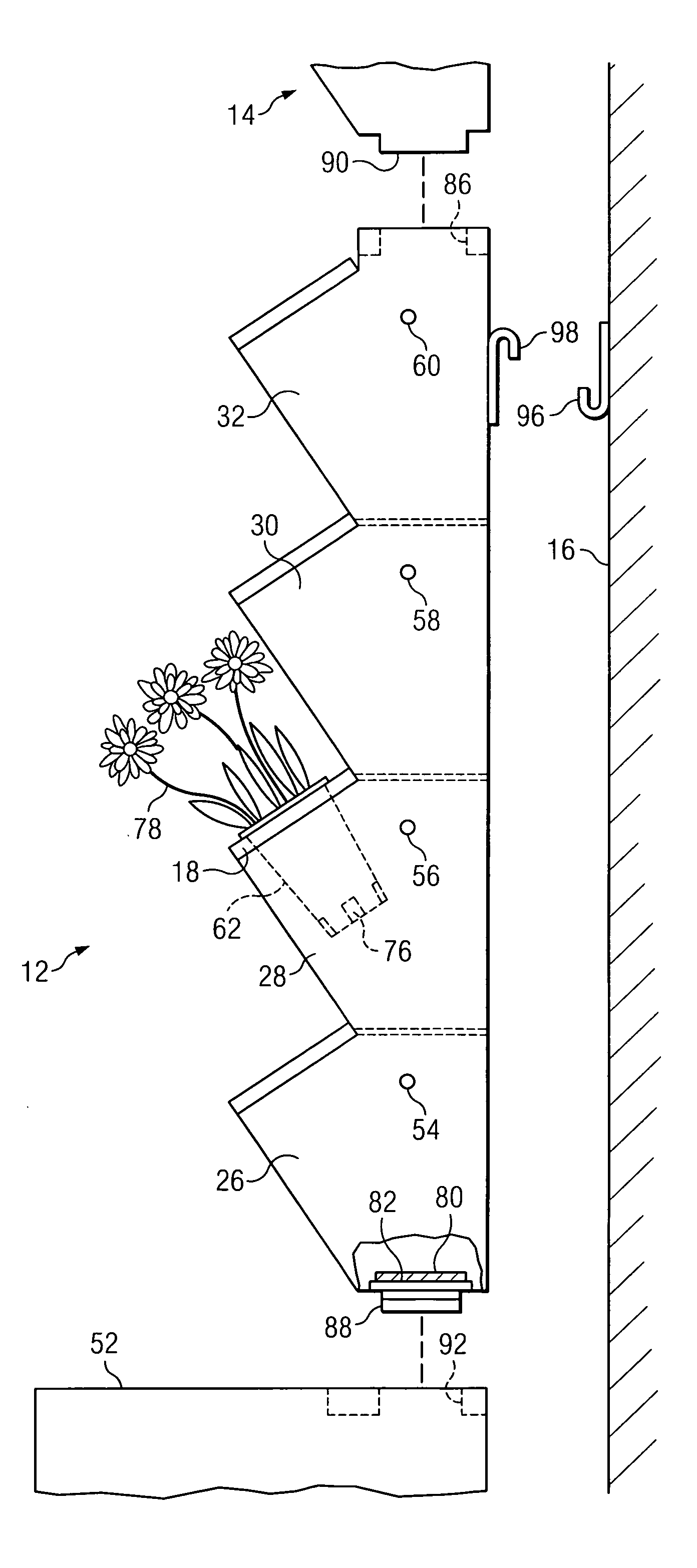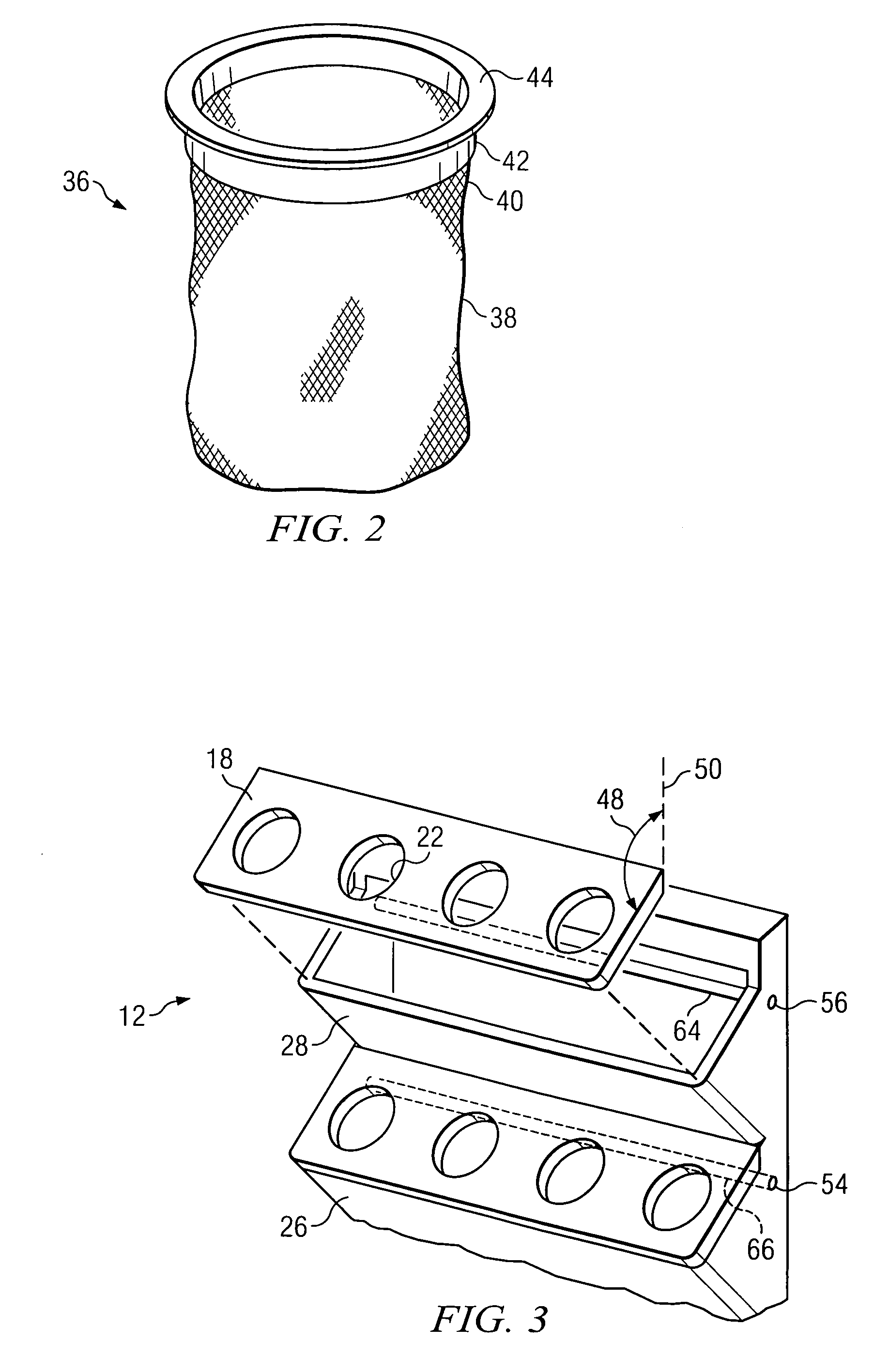Vertical planter
a planter and vertical technology, applied in the field of vertical planters, can solve the problems of affecting the appearance of the planter, the method does not fare well over time, and the fabric is covered with moss and sediment, and on close inspection is unsightly,
- Summary
- Abstract
- Description
- Claims
- Application Information
AI Technical Summary
Benefits of technology
Problems solved by technology
Method used
Image
Examples
Embodiment Construction
[0040]According to one embodiment of the invention, FIG. 1 illustrates a vertical planter 10 that is modular in construction so that different units can be arranged together to form a single vertical planter to accommodate a desired number of plants. The vertical planter 10 includes a first planter unit 12 and a second planter unit 14 that is mounted on top of the first planter unit 12. The vertical planter 10 is fastened to a wall 16 which can be of any type of structure, including the studs to which sheet rock is nailed, a mason or brick wall, or any other type of interior or outside vertical wall. Moreover, the vertical planter can be mounted to a wall of a building, or a free standing wall, fence or any other type of vertical support.
[0041]The planter units, such as unit 12, can be constructed from a variety of structurally strong, water tight materials, such as plastic. Since each unit of the vertical planter 10 is constructed in an identical or similar manner, only the bottom ...
PUM
 Login to View More
Login to View More Abstract
Description
Claims
Application Information
 Login to View More
Login to View More - R&D
- Intellectual Property
- Life Sciences
- Materials
- Tech Scout
- Unparalleled Data Quality
- Higher Quality Content
- 60% Fewer Hallucinations
Browse by: Latest US Patents, China's latest patents, Technical Efficacy Thesaurus, Application Domain, Technology Topic, Popular Technical Reports.
© 2025 PatSnap. All rights reserved.Legal|Privacy policy|Modern Slavery Act Transparency Statement|Sitemap|About US| Contact US: help@patsnap.com



